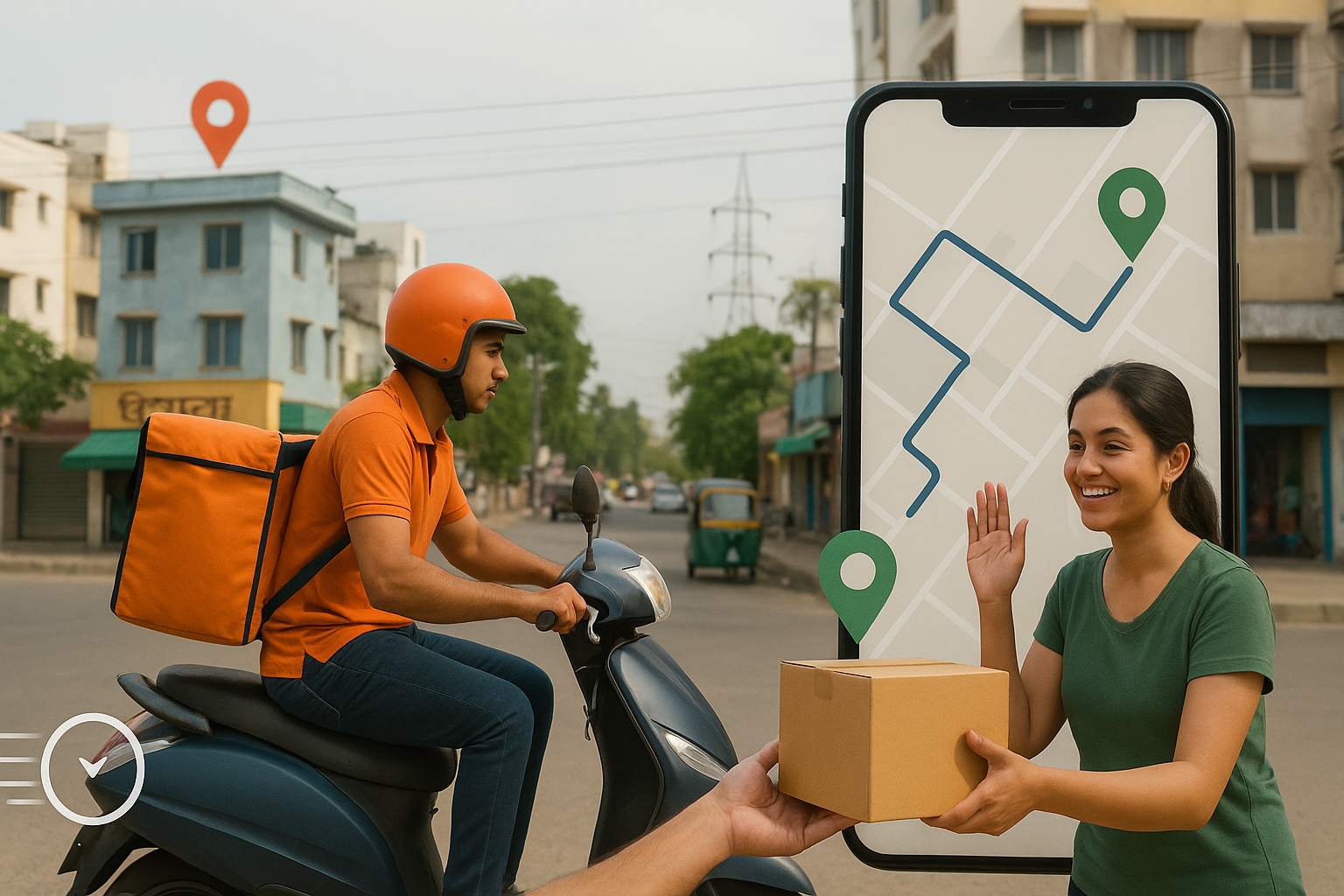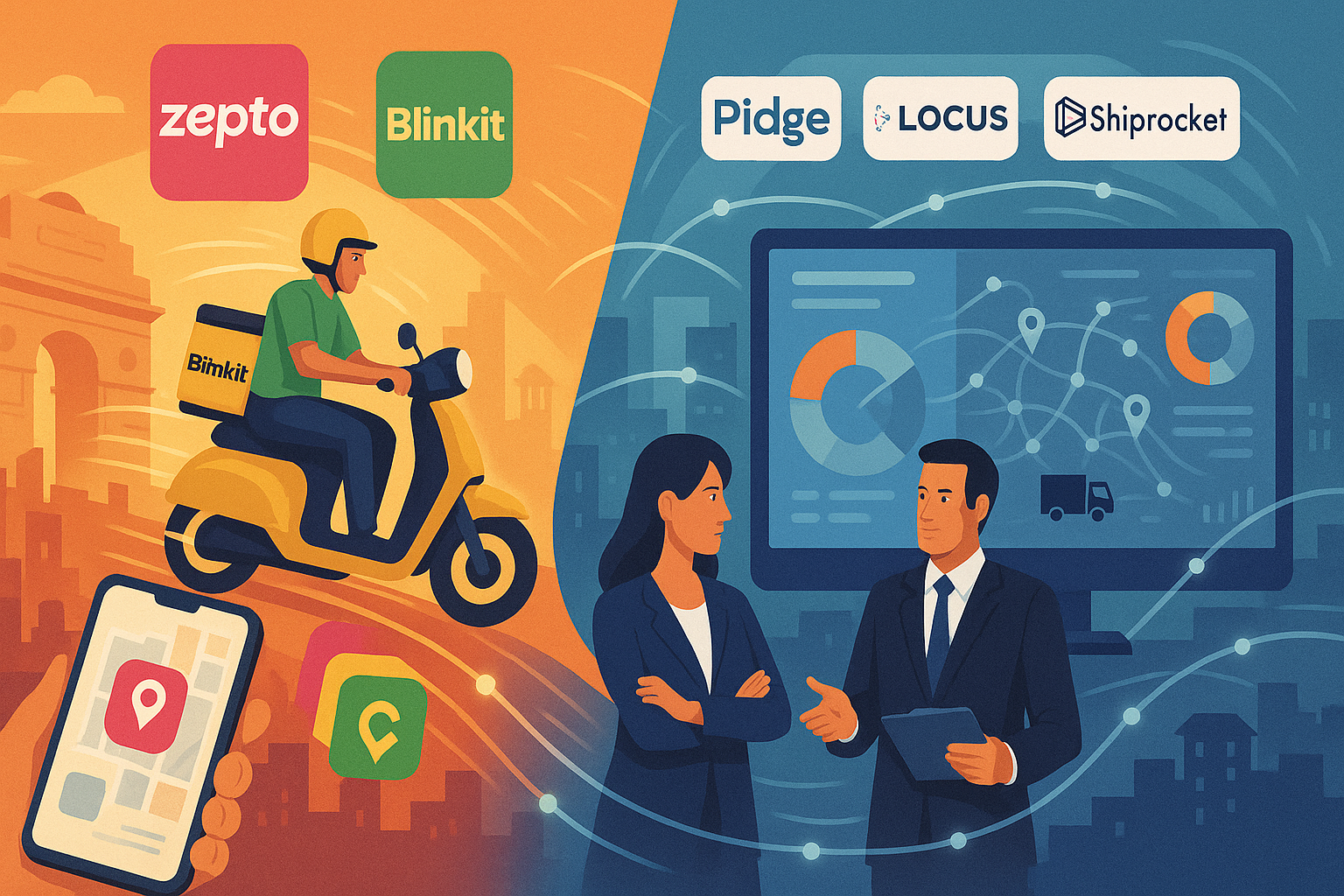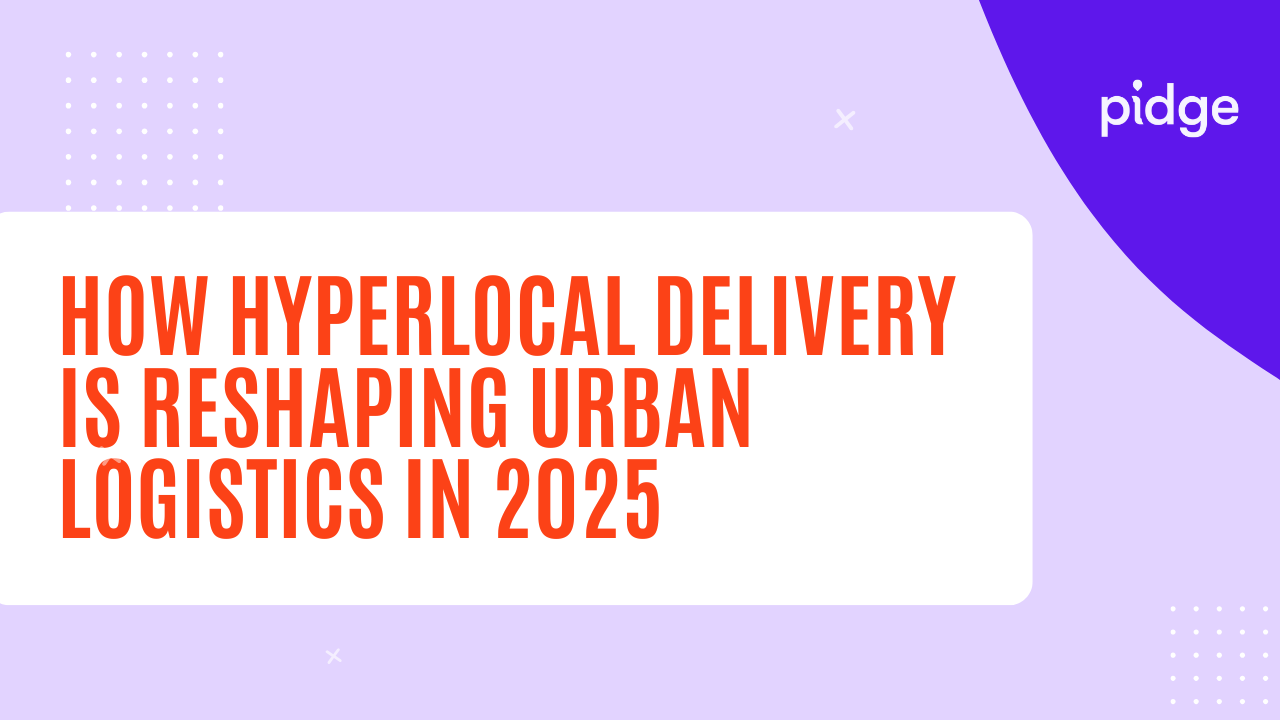How Hyperlocal Delivery Is Transforming the Consumer Experience

Strong 8k brings an ultra-HD IPTV experience to your living room and your pocket.
In Todays ERA, Customers do not wanted to wait more for their food, grocery, and medicine. They loves to get order asap like within 10-30 mins. Have you ever feel like. Welcome to the hyperlocal delivery world where brands are delivering your fav to your doorstep- faster. By bringing inventory closer, optimizing logistics with technology, and delivering within short geographic zones, hyperlocal systems are transforming everyday transactions into seamless, real-time experiences. Through deployment near the consumer, more intelligent logistics and taking a short delivery zone approach, the hyperlocal systems are transforming daily transaction to be silky smooth and real time.
Let’s explore how hyperlocal delivery is revolutionizing the customer journey and they’re transforming consumer culture in India today.
The Growing Demand for Lightning-Fast Delivery
The transition to hyperlocal logistics is associated with the modification of consumer demands. In the last ten years, convenience has been consistently moving up the ladder of priority in purchasing decisions. However, speed went off the shelf to be a necessity during and after the pandemic. Modern consumers live in an on-demand culture, it is the world where food, rides, payments, and even healthcare are possible within few minutes. This trend has only been accelerated by mobile-first lifestyles, super-concentrated urban centers and app-based marketplaces. As a result, businesses must now meet customers where they are and when they want, often within the hour.
To begin with, India’s quick-commerce market business is booming. In fiscal year 2025 consumers have spent a staggering ₹64,000 crore ($8 billion+) on such grocery delivery services like on Blinkit and Instamart and other marketplace, a figure expected to triple to 2 lakh crore by fiscal year 2028. People are loving the convenience and are absolutely willing to pay. That makes on-demand culture here to stay.
The Hyperlocal Delivery Model
At its core, hyperlocal delivery Model is about delivering fast without sacrificing accountability or quality. Hyperlocal delivery doesn’t rely on big centralized warehouses located on city outskirts. Instead, it uses dark stores compact, hyper-efficient storage spaces inside neighborhood stocked with high-demand items. So when you order a packet of food or groceries, it’s not coming from 20 km away; it’s likely a couple of blocks from you. Platforms have layered this with intelligent dispatch systems powered by AI. With hyperlocal delivery model: inventory is kept closer to the customer and Orders are routed through technology that dynamically assigns them to nearby delivery partners based on location, product type, and urgency. Orders are auto-assigned to the closest available rider based on factors like traffic, time of day, and order size.
The Logistics Engine: Technology That Powers Hyperlocal Speed
What hyperlocal delivery truly changes is how customers experience a brand. When your order shows up fresh, complete, and on-time every-time you don’t just appreciate the speed. You trust the brand. You remember it. And you come back.
This is particularly effective in other areas such as grocery, medicine, personal care and gifting. In case you ever ordered a bunch of flowers from Ferns N Petals by just two hours before of birthday or booked a beauty product from Nykaa and had it deliver the same day, you know the kind of emotional value this speed adds.
In addition, the human touch has not been extinguished. Riders are increasingly courteous and tech-enabled. They are trackable, in real time, they can chat in the app and the deliveries are well packaged and feel premium, even when only one loaf of bread and one bar of chocolate is delivered.
Delivering More Than Orders: How the Last Mile Builds Customer Trust
The hyperlocal delivery has opened the doors to new habits of shopping. It is no longer the case that people add everything into one large cart to last them through the week. Rather, they are customizing their orders, when they require it. It is common to have a customer who make orders three or four during a day: coffee in the morning, phone charger during lunch and ice cream at night.
This real-time, micro-purchases behaviour has significant brand pricing, bundling and product promotion consequences. It is also open the door to expansion in categories such like pet supplies, electronics, and party supplies, stationery and even festival gifts are also being offered on-demand.
Interestingly, this isn't just an urban phenomenon anymore. While the first wave of hyperlocal success was seen in metro cities, platforms are now rapidly expanding into Tier 2 and Tier 3 markets where speed still wows and local inventory matters.
Behind the Scenes: The Technology and Logistics That Make It Happen
To keep up with these fast-moving orders, logistics platforms are getting smarter and more agile. Players like Pidge are giving businesses the ability to manage their own hyperlocal delivery systems using AI. This means a brand can choose to deliver using its own fleet, outsource to partners, or use a hybrid model without compromising on timelines or visibility.
These platforms offer real-time SLA tracking, route optimization, and intelligent rider assignment at all through one dashboard. So while the customer enjoys a seamless experience, businesses get a back-end that’s automated, efficient, and scalable.
And let’s not forget the gig economy, which plays a crucial role here. Platforms rely on thousands of riders operating on flexible schedules to keep delivery networks responsive and always-on. It’s a win-win: customers get their stuff fast, and delivery partners get earning opportunities without traditional 9-to-5 constraints.
How Quick Delivery Builds Lasting Brand Relationships
One of the most overlooked impacts of hyperlocal delivery is how it’s deepening brand-customer relationships. Once people feel secure, speedy and friendly service, they always remember that. They share with their friends, neighbors and family as well. They leave positive reviews and keep using the services. The new hyperlocal delivery is not only assisting brands with distinguishing themselves based on what they are delivering, but also based on how they deliver it. Experience becomes the new war ground, in a crowded market, where every competitor is a tap away. If a platform consistently shows up faster, more accurately, and with better communication, it earns more than a customer and it earns an advocate.
The Future of Hyperlocal Delivery
Future of hyperlocal delivery in India are even more exciting. Hyperlocal models are expanding into Tier 2 and 3 cities, subscription-based services, and even B2B delivery. EV fleet integrations, drone pilots in controlled environments, and AI-powered suggestions on additional purchases depending on past orders are already becoming a reality.
And now,the model is moving beyond B2C. B2B services are beginning to take on hyperlocal delivery the way a retailer might get a replenishment of inventory from a local distributor in real-time.
Here technology platforms such as Pidge, Shiprocket and Locus are contributing to this immensely, helping businesses of all sizes manage deliveries, reduce cost per order, and gain visibility across couriers and fleets all while keeping control of the customer experience.
Conclusion
Now you can say, Hyperlocal delivery is no longer a premium service. nowadays, It is the new normal. Consumers expect it, businesses are building for it, and technology is enabling it at scale. The brands that win in this space will be the ones that see delivery not as a backend operation but as a front-line brand experience. In a world where customer loyalty is fragile, and competition is everywhere, hyperlocal delivery offers one of the strongest tools to win hearts, carts, and repeat business. If you’re still thinking about adding it to your strategy it’s time to stop thinking and start delivering.
Note: IndiBlogHub features both user-submitted and editorial content. We do not verify third-party contributions. Read our Disclaimer and Privacy Policyfor details.




